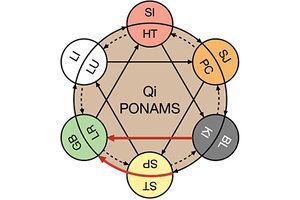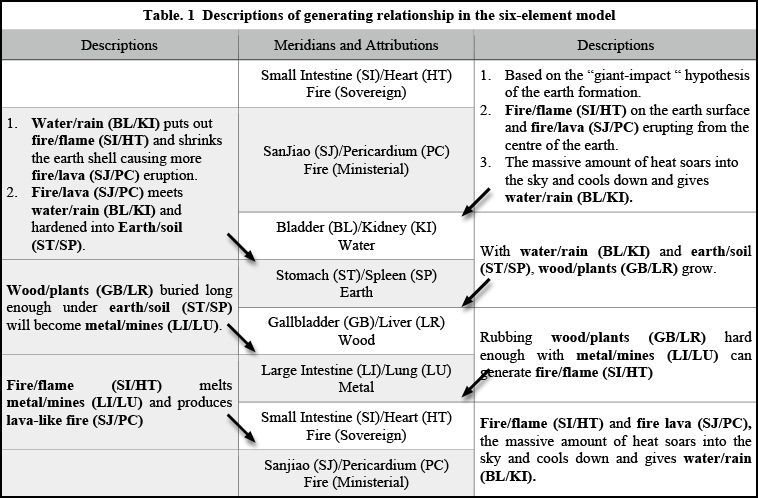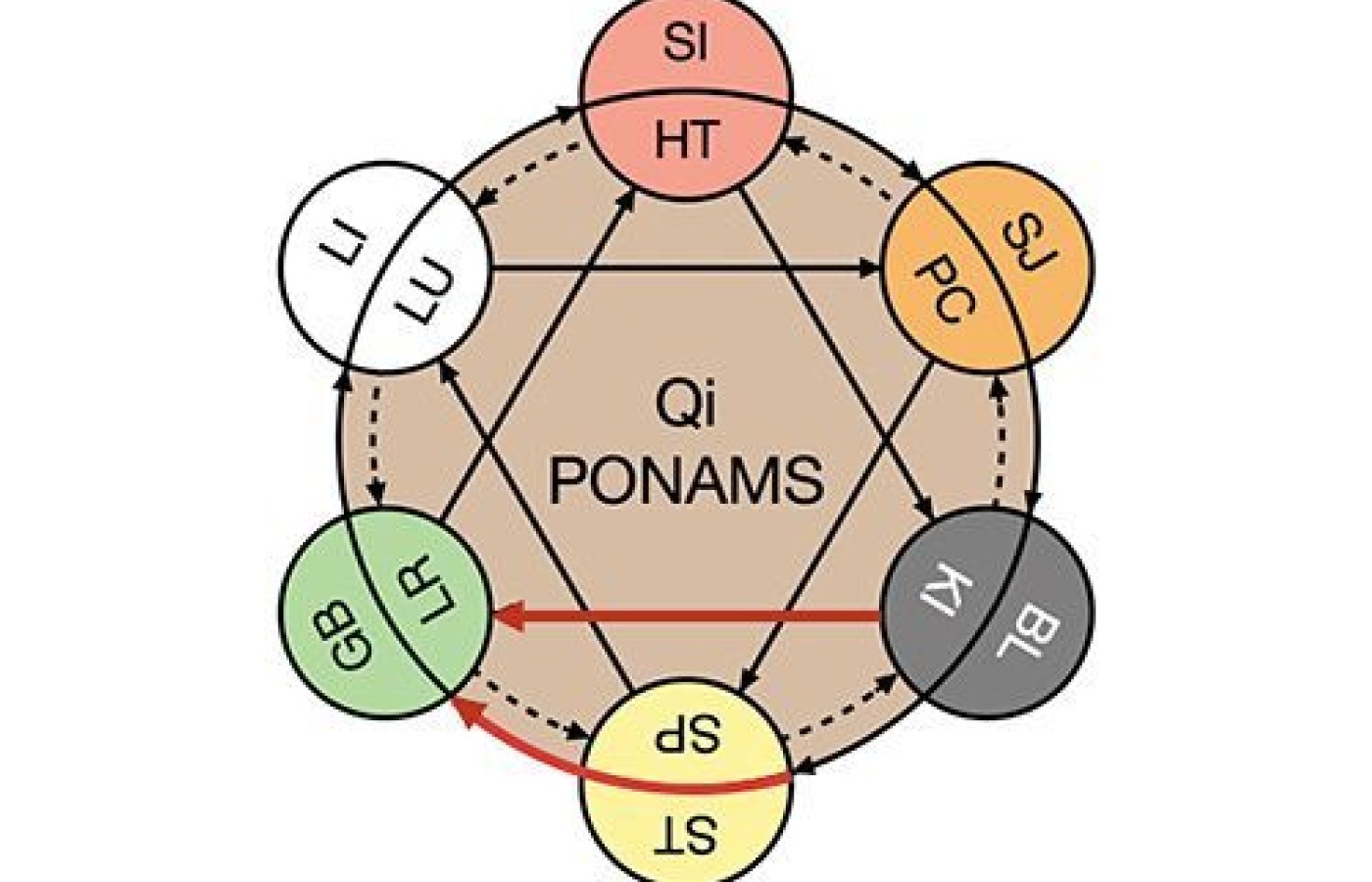Whether you accept it, avoid it or live somewhere in between, insurance coverage has become a defining issue for our profession. Patients increasingly expect to use their benefits, practitioners want to be compensated fairly for their time and expertise, and the system itself remains – at best – fragmented. The encouraging news is that coverage has expanded in meaningful ways. The challenging news is that reimbursement, across the board, remains inadequate.
New Discoveries in Old Concepts: Re-examining the Chinese Medicine Theory (Part 1)
"What gets us into trouble is not what we don't know. It is what we know for sure that just ain't so." — Mark Twain
This article, divided into three parts, aims at disclosing the flaws in TCM theories, elucidating modifications made to correct conceptual drawbacks, and providing a firm basis for balanced theoretical structures and highly reproducible clinical applications.
In 1979, the World Health Organization (WHO) approved traditional acupuncture as a valid method of treating indicated diseases, symptoms, or conditions.1 However, numerous systemic re-view and meta-analysis articles reported the controversial treatment effects of acupuncture on various types of disorders.1-13 In addition to poorly conducted experimental designs and methodological weaknesses, no articles have questioned the correctness of TCM theories that guide acupuncture practice and its derivative treatment protocols until the present.
Three of TCM's theories were discovered questionable and required modifications.
- The lack of the concept of a "father" does not reflect the laws of nature that both genders are necessary to reproduce the next generation.
- The unevenly distributed twelve meridians in the five-element model do not show the state of balance.
- The course of symptom transmission in the five-element model does not match the meridian routes in the neck area.
Current Status of TCM and Acupuncture

The global popularity of acupuncture does not assure the perfection of TCM theory and the consistency of therapeutic results. Scrutinizing the reliability of TCM foundations becomes indispensable to reassure the wholeness of theoretical frameworks on which the clinical duplicability and academic research advancements are built.
Unlike Western medicine with its high reproducibility resulting from science, traditional acupuncture often exhibits variable outcomes and unstable consistency for the same conditions, even among experienced acupuncturists with advanced training. When acupuncture is incapable of managing pain or numbness with the same success as WHO-approved indications among well-trained practitioners, it is reasonable to challenge the credibility and applicability of TCM theory for different types of disorders. This issue is of particular importance to acupuncturists who seek a fast and reliable acupuncture system with high reproducibility and predictable prognosis after mastering acupuncture's fundamentals.
Traditional acupuncture and many derivative methods have shown exceptional pain relief effects in various cases.14-25 When misconceptions occur concerning the theory, despite the techniques an acupuncturist chooses to apply, the existing "frame" will prevent technical progress and re-search advancements from transcending boundaries and achieving substantial improvements.
Assessing TCM Theory: The Concept of a "Father"
Almost all species in nature, including hermaphrodites, need both sexes to reproduce the next generation. Asexual reproduction may be another primary form of reproduction for single-celled organisms and some plants and fungi, but these rare cases hardly represent overall reproduction in general.
One of TCM's fundamentals is "A mother-element generates a son-element" (mother-son relationship), which resembles asexual reproduction. Regardless of why TCM chose an atypical natural phenomenon as a central foundation, Chinese medicine and acupuncture have propagated over centuries and spread internationally without questions being raised by TCM or acupuncture practitioners. If Chinese medicine with the "mother-only" concept has obtained medical achievements and global attention, it is not difficult to find the potential and capability of an acupuncture system with a "father" present to reflect the true laws of nature.
By incorporating the concept of a "father" into TCM theory, looking at how the five-element model explained the generating-controlling relationship, and distributing six paired meridians evenly into their corresponding element, a new six-element model (Figure 1) was conceptualized and established to describe this most basic TCM theory better.
The "parents-children" concept has been applied to clinical practice in the last decade world-wide, including the U.S., and gained substantial evidence-based clinical results.26-32 The management of neuropathy, numbness, and other difficult painful and functional disorders with high reproducibility and success than that of traditional acupuncture lies in the "parents-children" relationship.
The modifications made to TCM theory had contributed acupuncture treatment a new perspective and provided a firm basis for duplicable therapeutic effects on intractable pain and numbness management. The rest of the two topics, the original five-element vs. new six-element and the course of symptoms transmission (CST) in the neck area, will be addressed in the following articles.

References
- Muñoz-Ortego J, Solans-Domènech M, et al. Medical indications for acupuncture: systematic review. Med Clin (Barc), 16 Sep 2016;147(6):250-6.
- Lian WL, Pan MQ, et al. Effectiveness of acupuncture for palliative care in cancer patients: a systematic review. Chin J Integr Med, Feb 2014;20(2):136-47.
- Chou PC, Chu HY. (2018). Clinical efficacy of acupuncture on rheumatoid arthritis and associated mechanisms: a systemic review. Evid Based Complement Alternat Med, 12 Apr 2018;8596918.
- Lam M, Galvin R, et al. Effectiveness of acupuncture for nonspecific chronic low back pain: a systematic review and meta-analysis. Spine, 15 Nov 2013;38(24):2124-38.
- Miner SA, Robins S, Zhu YJ. et al. Evidence for the use of complementary and alternative medicines during fertility treatment: a scoping review. BMC Complement Altern Med, 15 May 2018;18(1):158.
- Huang Z, Qin Z, Yao Q, et al. Moxibustion for chemotherapy-induced nausea and vomiting: a systematic review and meta-analysis. Evid Based Complement Alternat Med, 2017;2017:9854893.
- Liu YH, Dong GT, et al. Effectiveness of acupuncture for early recovery of bowel function in cancer: a systematic review and meta-analysis. Evid Based Complement Alternat Med, 2017;2504021.
- Xu Y, Zhao W, et al. Effects of acupuncture for the treatment of endometriosis-related pain: a systematic review and meta-analysis. PLoS One, 27 Oct 2017;12(10):e0186616.
- Zhang B, Xu H, Wang J, et al. A narrative review of non-operative treatment, especially traditional Chinese medicine therapy, for lumbar intervertebral disc herniation. Bio-sci Trends, 2017;11(4):406-417.
- He XR, Wang Q, Li PP. Acupuncture and moxibustion for cancer-related fatigue: a systematic review and meta-analysis. Asian Pac J Cancer Prev, 2013;14(5):3067-74.
- Cho KH, Kim TH, Jung WS. et al. Pharmacoacupuncture for idiopathic Parkinson's disease: a systematic review of randomized controlled trials. Evid Based Complement Alternat Med, 25 Jun 2018;2018:3671542.
- Kwon CY, Lee B, et al. Efficacy and safety of auricular acupuncture for cognitive impairment and dementia: a systematic review. Evid Based Complement Alternat Med, 31 May 2018:3426078.
- Deng G, Bao T, et al. Understanding the benefits of acupuncture treatment for cancer pain management. Oncology (Williston Park), 2018 Jun;32(6):310-6.
- Lambing A, Kohn-Converse B, et al. (2012). Use of acupuncture in the management of chronic haemophilia pain. Haemophilia, 2012; 18, 613-7.
- Karatay S, Uzkeser H. Beneficial acupuncture treatment for systemic sclerosis which was non-responsive to medications. Acupuncture & Electro-Therapeutics Research, 2015;40, 205-14.
- Chang BH, Sommers E. Acupuncture and relaxation response for craving and anxiety reduction among military veterans in recovery from substance use disorder. The American Journal On Addictions, 2014; 23, 129-36.
- Ko CN, Lee IW, et al. Acupuncture for cerebral vasospasm after subarachnoid hemorrhage: a retrospective case-control study. Journal Of Alternative and Complementary Medicine, 2013;19, 471-3.
- Liu ZD, He JB, Guo SS, et al. Effects of electroacupuncture therapy for Bell's palsy from acute stage: study protocol for a randomized controlled trial. Trials, 2015; 16, 378.
- Hommer DH. Chinese scalp acupuncture relieves pain and restores function in complex regional pain syndrome. Military Medicine, 2012; 177 (10):1231-4.
- Fofi L, Allais G, Quirico PE, et al. Acupuncture in cluster headache: four cases and review of the literature. Neurological Sciences, 2014; 35, 195-8.
- Lee JA, Park SW, Hwang PW, et al. Acupuncture for shoulder pain after stroke: a systematic review. The Journal of Alternative and Complementary Medicine, 2012; 18, 818–823.
- Hutchinson AJP, Ball S, et al. The effectiveness of acupuncture in treating chronic non-specific low back pain: a systematic review of the literature. Journal of Orthopaedic Surgery and Research, 2012; 7, 36-43.
- Wu MS, Chen KH, Chen IF, et al. The efficacy of acupuncture in post-operative pain management: a systematic review and meta-analysis. PLoS One, 2016.
- Santiago MV, Tumilty S, et al. Does acupuncture alter pain-related functional connectivity of the central nervous system? A systematic review. Journal of Acupuncture and Meridian Studies, 2015; 9, 167-177.
- Yuan OL, Guo TM, et al. Traditional Chinese medicine for neck pain and low back pain: a systematic review and meta-analysis. PloS One, 2015.
- Wong CS, Kuo CP, et al. Collateral meridian therapy dramatically attenuates pain and improves functional activity of a patient with complex regional pain syndrome. Anesthesia & Analgesia, 2007;104, 452.
- Yeh CC, Ko SC, et al. Shoulder tip pain after laparoscopic surgery analgesia by collateral meridian acupressure (shiatsu) therapy: a report of 2 cases. Journal of Manipulative and Physiological Therapeutics, 2008; 31, 484-488.
- Yeh CC, Wu CT, et al. Collateral meridian acupressure therapy effectively relieves postregional anesthesia/analgesia backache. Southern Medical Journal, 2009; 102, 1179-1182.
- Lin JA, Wong CS, et al. Successful treatment of primary dysmenorrhea by collateral meridian acupressure therapy. Journal of Manipulative and Physiological Therapeutics, 2010; 33, 70-75.
- Horng HC, Kuo CP, et al. The effects of collateral meridian therapy for knee osteoarthritis pain management: a pilot study. Journal of Manipulative and Physiological Therapeutics, 2013; 36, 51-56.
- Lee SH, Lu WA, et al. The therapeutic effect of collateral meridian therapy is comparable to acupoint pressure therapy in treating myofascial pain syndrome. Complementary Therapies in Clinical Practice, 2014; 20, 243-250.
- Pan RY, Hsu YC, et al. Comparing complementary alternative treatment for chronic shoulder pain of myofascial origin: collateral meridian therapy versus local tender area-related meridians therapy. Medicine (Baltimore), 2016; Aug;95(35):e4634.



